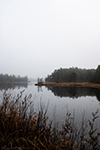Geological Differences
There are countless forms of terrain, plants, and bodies of water throughout the pinelands. The majority of the pinelands is covered in drier, sandy soil with the common pitch pine tree and shrubs. Many areas are swampy, and you'll find more tree species like the Atlantic white cedar and many species of oak. Most cedar forests, swamps, and lakes are located at lower elevations. It is usually found in any gradual valley or in between hills. Most areas of pitch pine are on a slight incline or at a higher elevation. More oak species are found in areas closer to sea level.
Closer to sea level, more bodies of water are found, which lowers the risk of wildfire in that area. The areas of the pinelands that are surrounded by bodies of water are less susceptible to wildfire. The areas of higher elevation within the pines may be more vulnerable to forest fire. This area is also found to have less biodiversity than the wetlands. Pitch pine trees also have a greater tolerance for wildfires and may be the last ones standing after a forest fire.
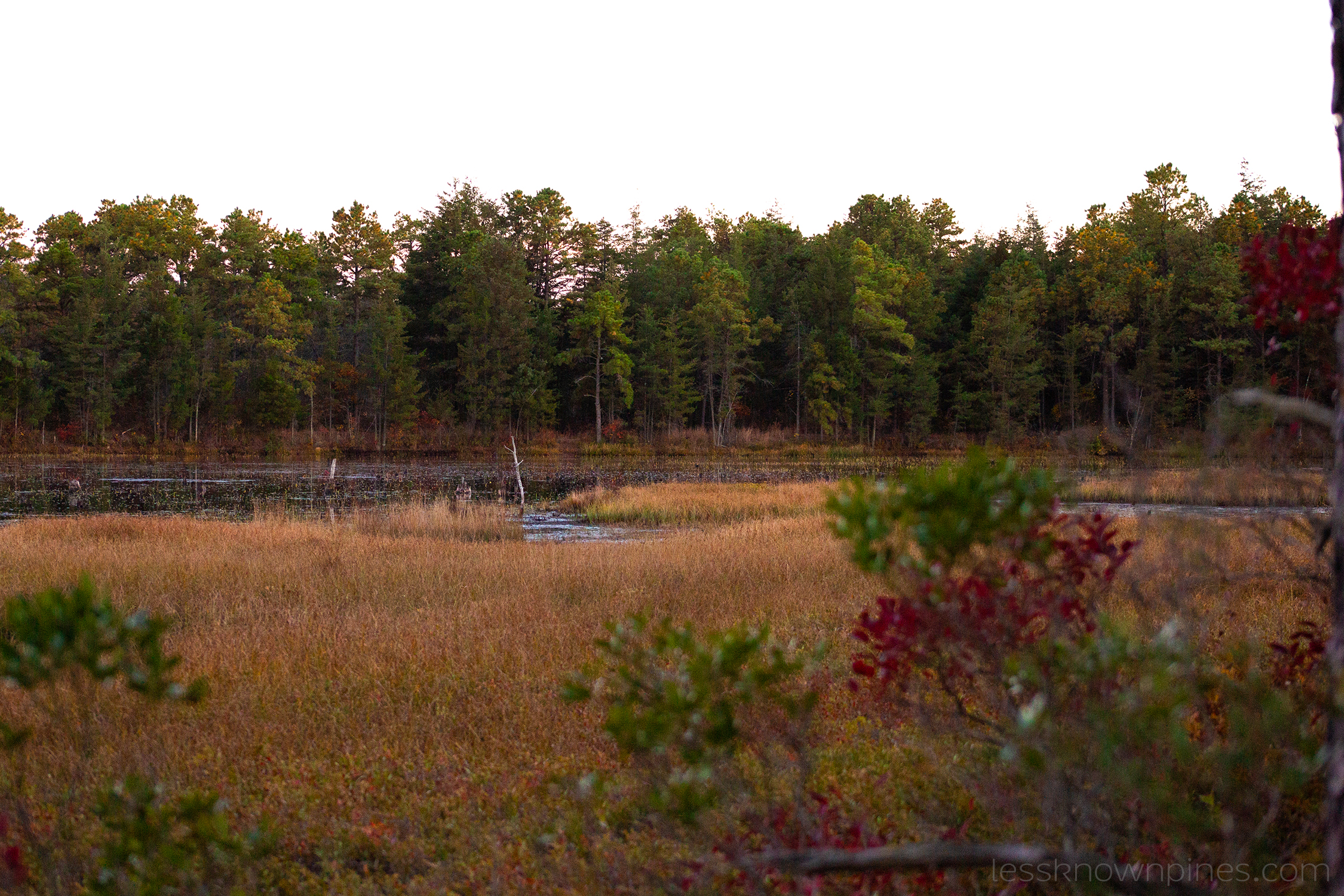 Marshy swamp surrounded by pitch pine and oak mixed in
Marshy swamp surrounded by pitch pine and oak mixed in
Northern Vs Southern Franklin Parker Preserve
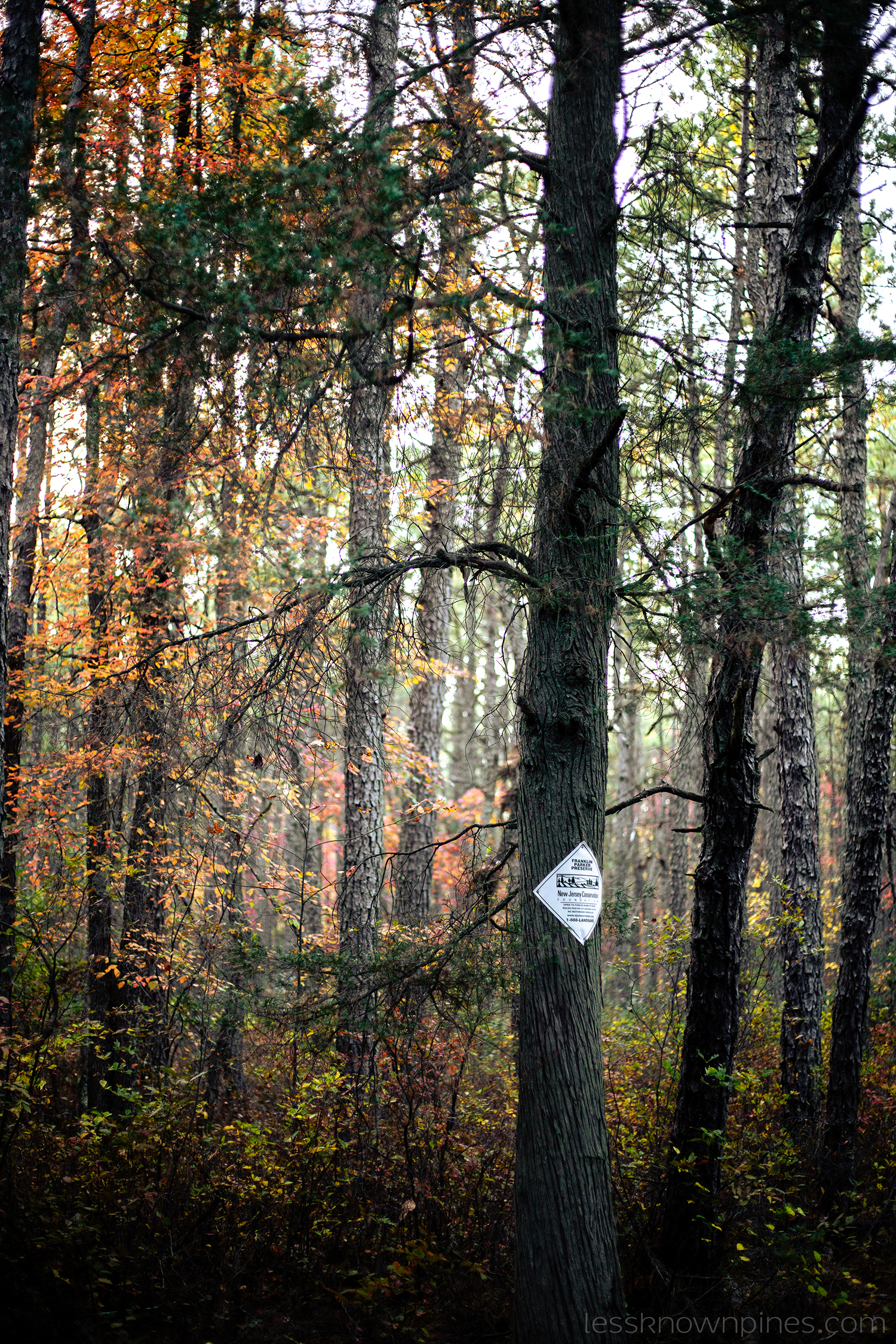
The main part of Franklin Parker Preserve is in the southern part. This is where many of the marshlands are located. In the northern part, you'll find a few 'cedar branches', which are dense strips of cedar forests, with tall and narrow Atlantic white cedar that grow very close together.
The southern part of the preserve contains most of the swamps, is closer to sea level, and has much more 'wetland' vegetation. More diverse plants are found within the wetlands and in areas of lower elevation.
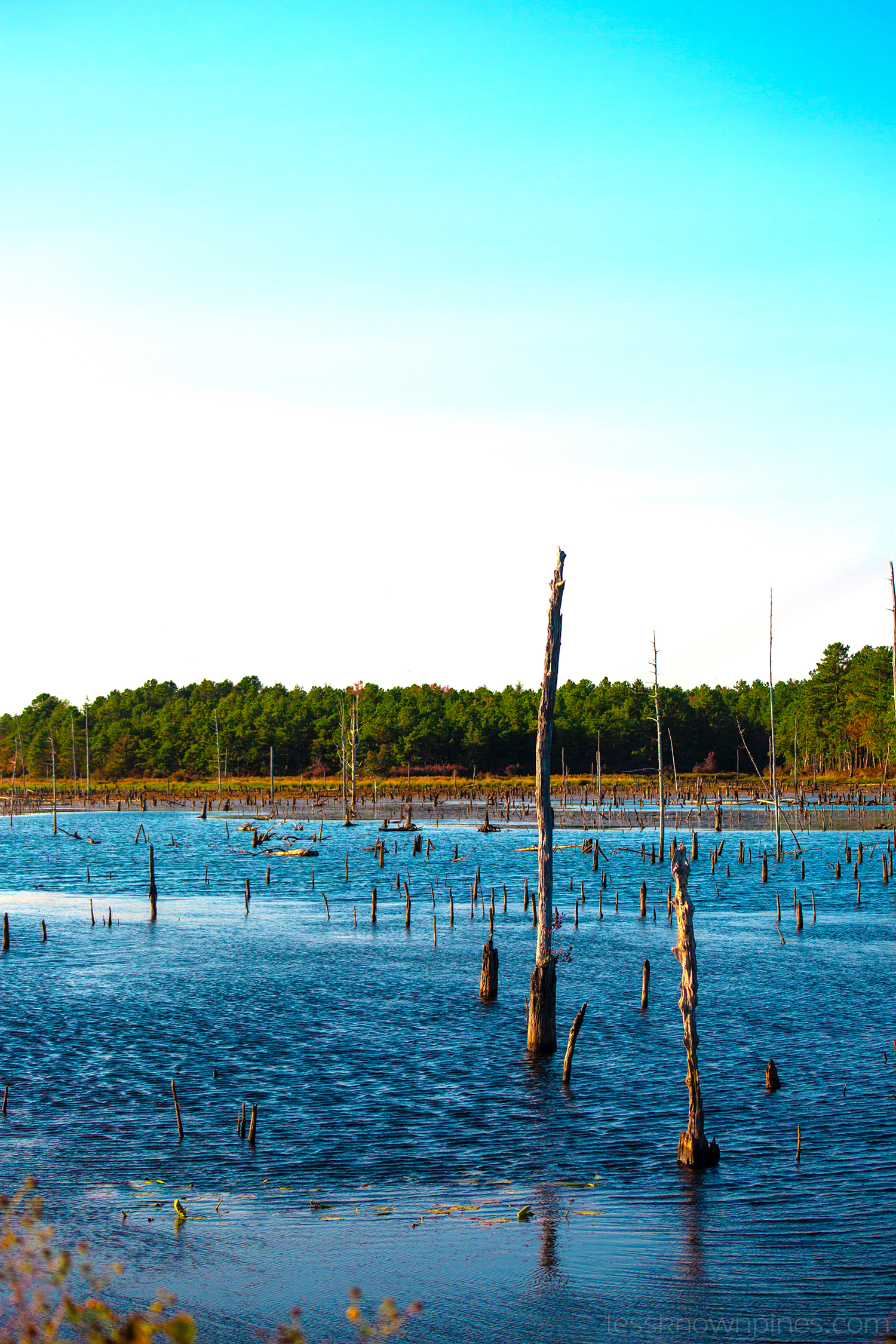
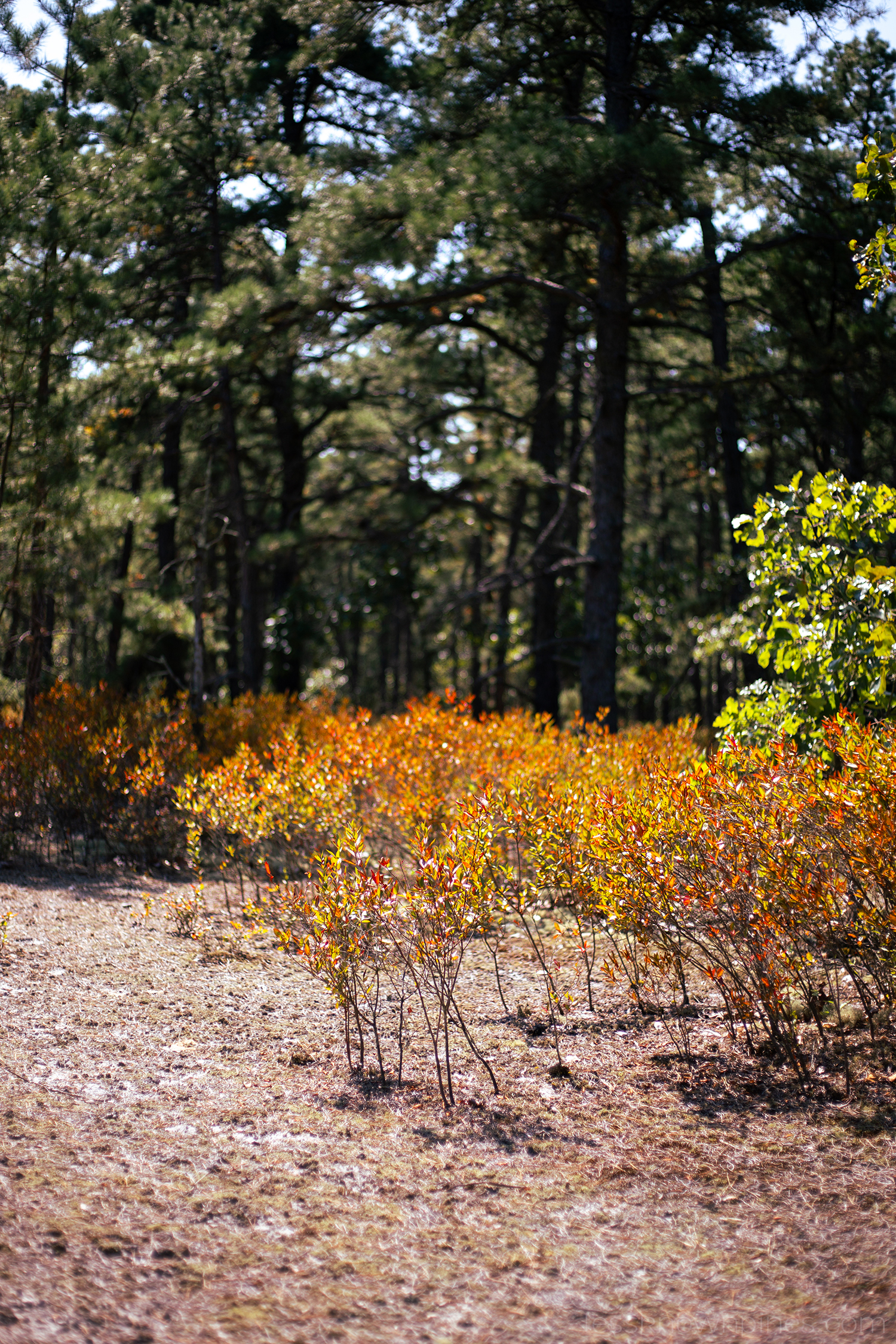
Dwarf Pine Forests
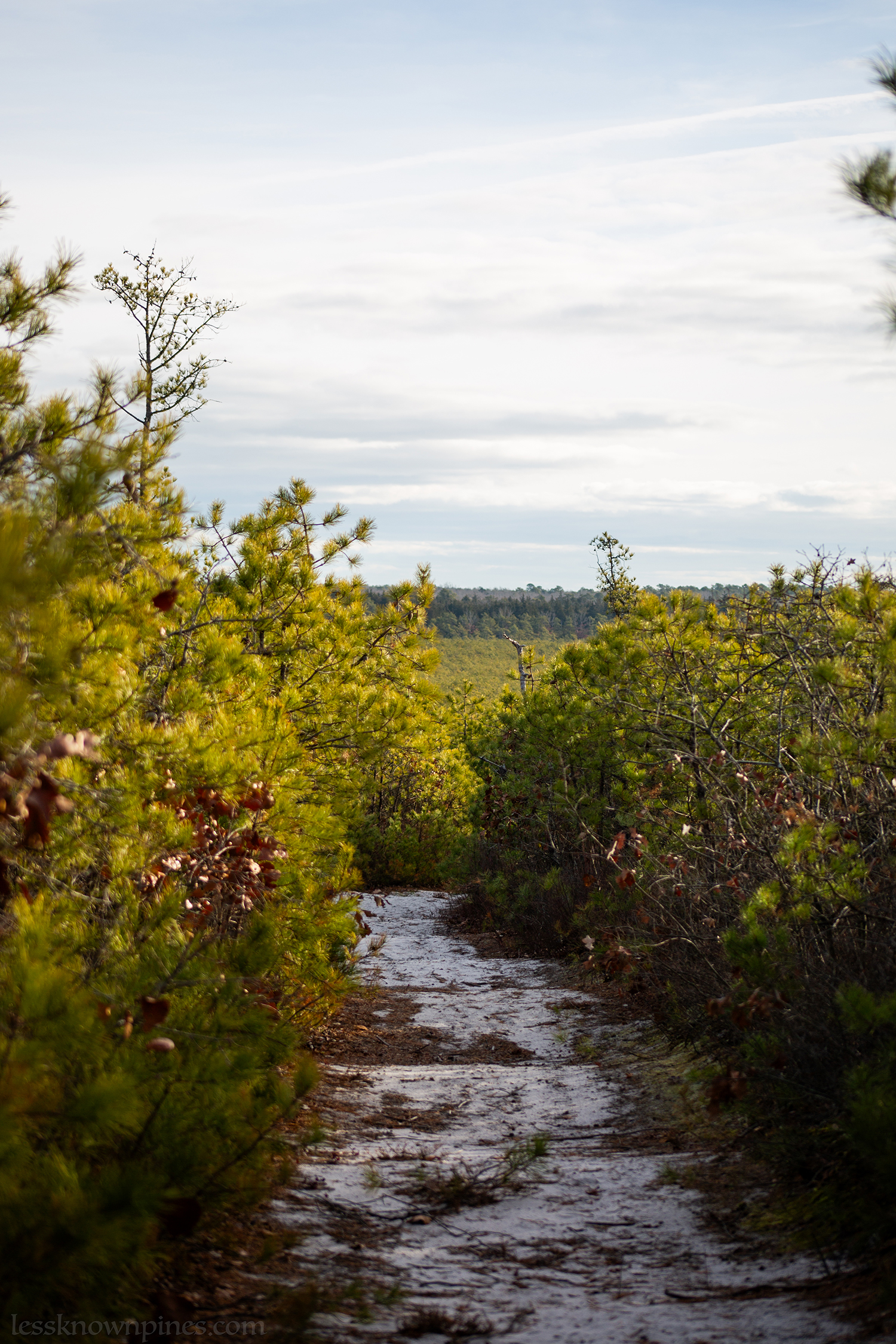
In some regions of the New Jersey pinelands, entire forests of Pitch pine trees will have stunted growth. Many of these trees in this unique part of the pinelands will never even see ten feet. In certain areas, you may even see over the trees. While it is common to see miniature pitch pine trees and saplings, most of them are mixed in with other full-sized trees. In the dwarf pine forests, every tree is stunted in growth.
Could it be the low-nutrient soil? The elevation within this part of the forest is much higher than the rest of the pinelands. Could that be a contributing factor? In the photo, the elevation is high enough that you can see over the wooded area.
 Wide trail through the dwarf pine forest
Wide trail through the dwarf pine forest
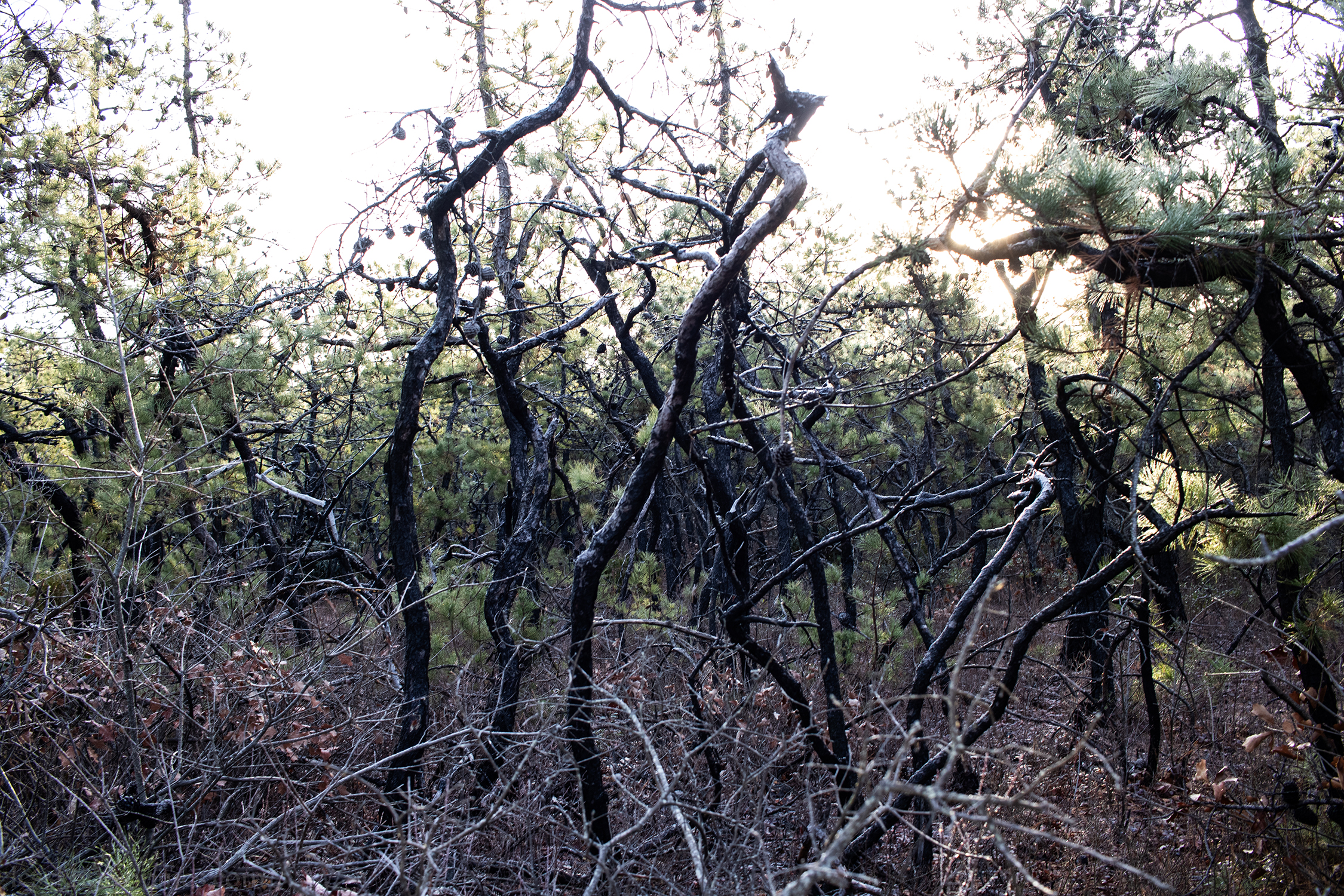 Could it have been a fire?
Could it have been a fire?
 Few dwarf trees peak above the rest
Few dwarf trees peak above the rest
Throughout the dwarf pine forest, there is a gradient of tree heights that leads up to the shortest trees. Certain areas of the forest contain taller (but still dwarf pine) trees, whereas other regions have pitch trees that are no more than a few feet tall. The gradient begins with taller dwarf pine trees, and then gradually, the trees become shorter. The shortest ones tend to be at the peak elevation of the forest.


Highlands of the Pinelands
If you said that the New Jersey pinelands are entirely flat, you'd be wrong. While some of the pinelands in New Jersey are flat and at a low elevation, certain areas exceed 200 feet above sea level. Although it's not mountainous, these hilly areas are almost like a miniature mountain range.
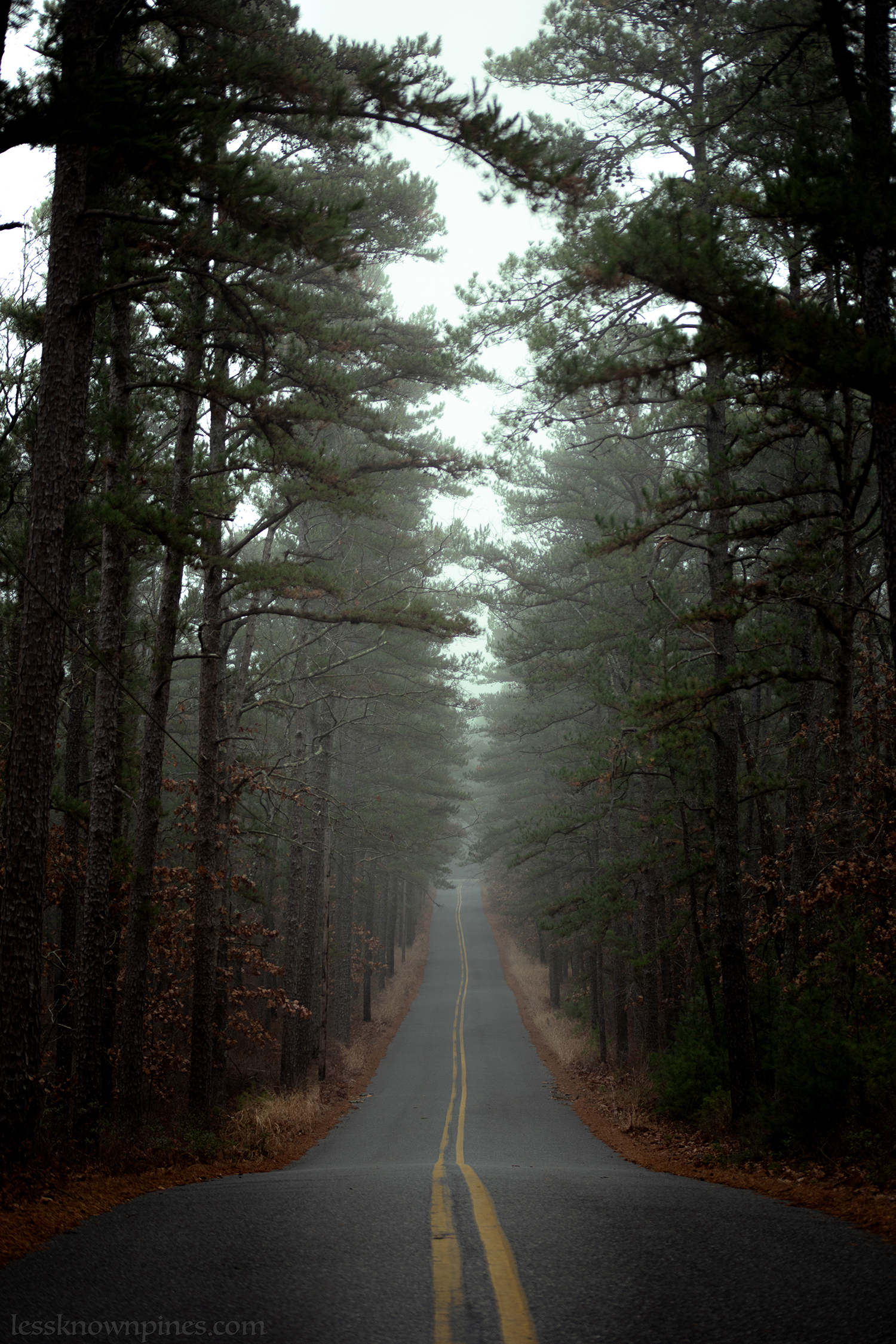
 Mountain laurel thicket trail in the highlands of the pinelands
Mountain laurel thicket trail in the highlands of the pinelands
The highland terrain is scattered throughout the pinelands. They have minimal swamps and are mostly comprised of upland forests with an abundance of pitch pine, mountain laurel, and many other upland plants. These ranges contain valleys, hills, and most of them are not gradual in elevation. The elevation can change as much as a hundred feet within a one-mile radius within the highlands.
In the pictures, the trail climbs tens of feet from the prior elevation. Mountain laurel bushes surround the area and the trail itself. A valley appears between the two hills. It primarily features pitch pine, oak, and various shrubs. Very few swamps are found in the highlands.




